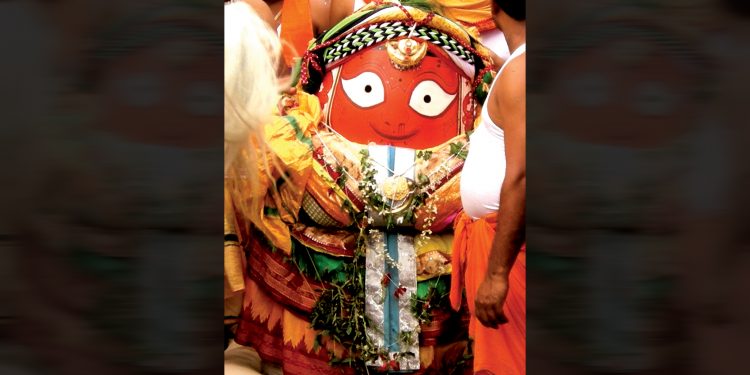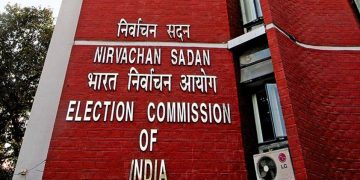Keonjhar: Sri Sri Baladevjew temple in Keonjhar is as old as 400 years. The temple is known for its own peculiarity – the colour of Goddess Subhadra is red while her usual colour elsewhere is yellow.
A legend has it that the deities at Sri Baladevjew temple were being worshiped as per tantric rituals. It is said that due to tantric system of worship, the colour of Devi Subhadra has turned into crimson red.
The famous temple here is over 90-ft high while the height of its chariot is more than 72-ft. The temple bears its magnificent architectural designs in delicate and floral patterns carved on stones.
Adding to its beauty are side deities placed around the temple. The shrine is protected by the Meghanada Prachir (massive stone wall). The 72-ft high chariot of Lord Baladevjew in Keonjhar is the tallest in the world.
Global Records and Research Foundation (GRRF) has recognised this claim. This chariot is taller than the one in Puri. Asia Pacific and Indian National Records have also recognised the chariot as the tallest in the world.
This mega chariot at Keonjhar has 16 wheels, eight axles, seven floors at different heights and 15 feet long Dhaja Bata. It is said that earlier its height was 74 ft, but due to shortage of wood, it was cut to 72 ft.
Maharaja Laxminarayan Bhanja had dreams about the Lord, His siblings and Sudarshan. Their wooden statues were lying buried deep in the sand on the bank of Baitarani river near Bancho under Anandapur sub-division.
Following the instruction of the king, the wooden statues were recovered from under the sand and installed at the temple. Before they were installed in the temple, they were worshipped as per the tantric tradition.
It was said that with tantric system of worship, the Sudarshan was lifted atop the temple. The system of worship and the rituals followed here are similar to those at the Srikshetra.
Bhaja Khichidi, Khiri Kakara and Manohari are offered as part of bhog to the deities here. Chandan Yatra, Rath Yatra and Dola Yatra are among the major festivals which are celebrated here with religious fervour and gaiety.
However, the deities here do not go through Nabakalebara since there is no provision of Nabakalebara in the Record of Rights here.
PNN






































